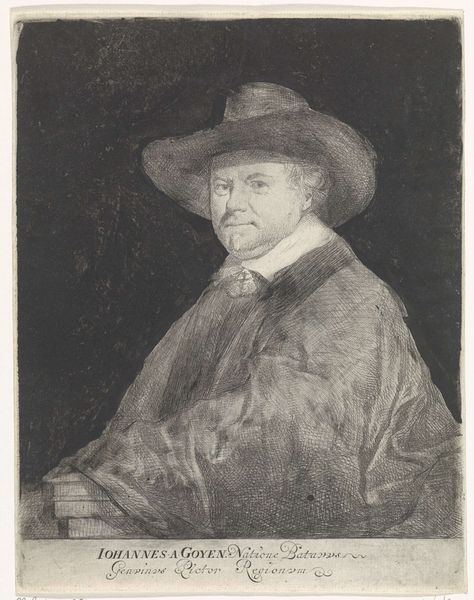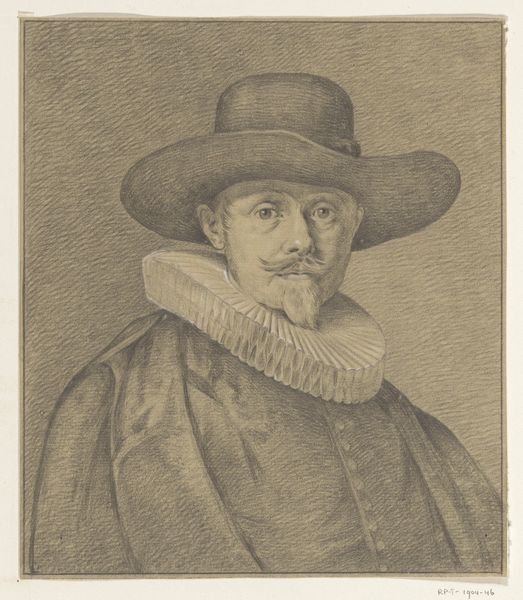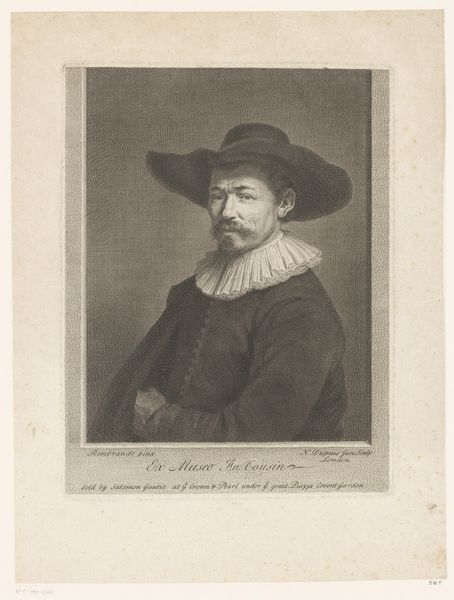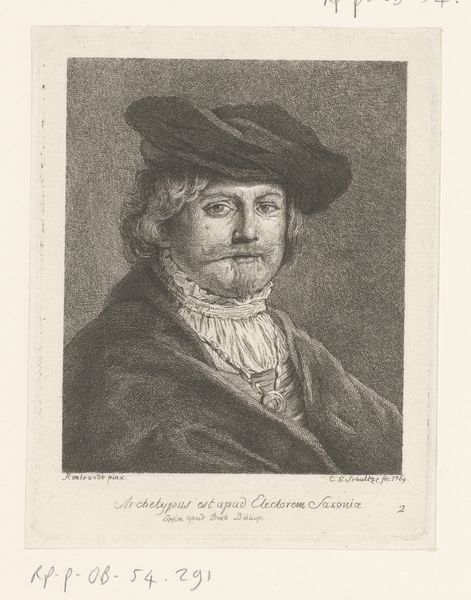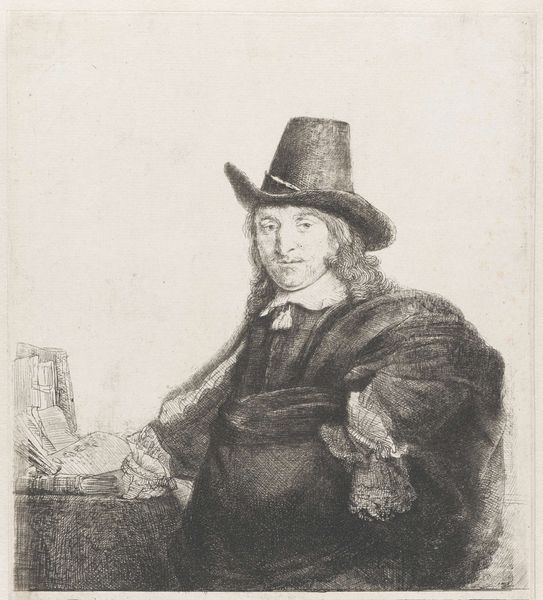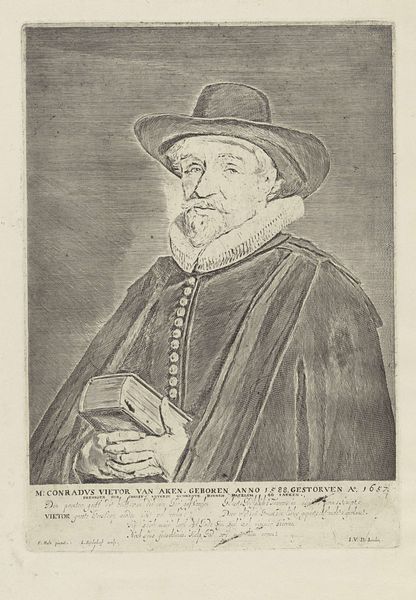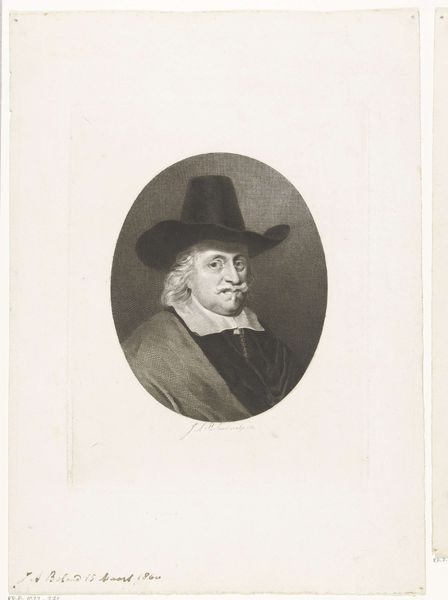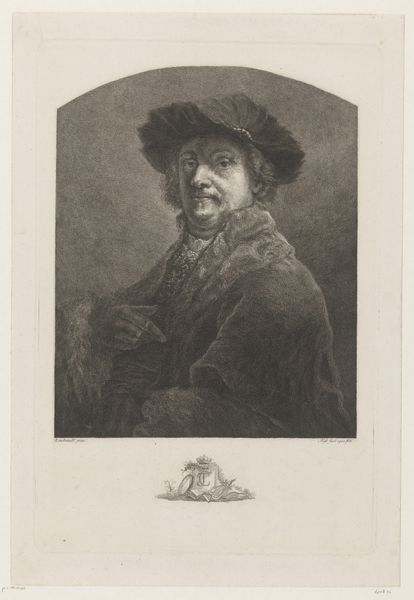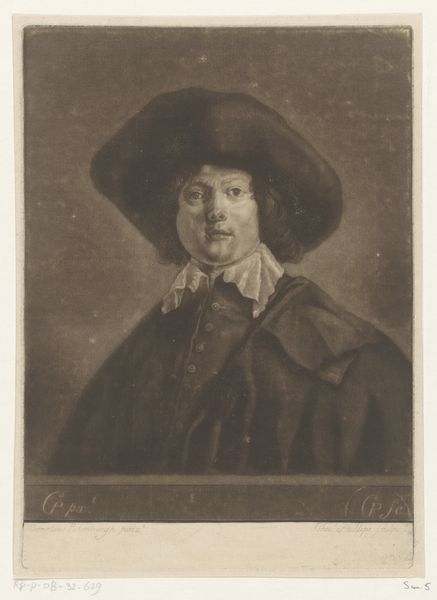
print, engraving
#
portrait
#
baroque
# print
#
old engraving style
#
portrait drawing
#
engraving
Dimensions: height 145 mm, width 119 mm
Copyright: Rijks Museum: Open Domain
Editor: Here we have Carel de Moor the Younger's "Portret van Jan van Goyen," an engraving from the late 17th or early 18th century housed in the Rijksmuseum. The man's face seems full of life even rendered in monochrome. I wonder, what social forces do you think were at play in the making and reception of this portrait? Curator: It’s interesting you use the word “life.” This print wasn’t necessarily made to capture van Goyen's life so much as to memorialize and solidify his legacy as a painter, decades after his death in 1656. Editor: A posthumous legacy piece... Interesting. Curator: Exactly! Printmaking was crucial in disseminating artistic styles and ideas across Europe. The image of an artist like Jan van Goyen being circulated through prints underscores how art history itself was being constructed. We see the Baroque emphasis on detail. Does this then reflect an effort to elevate artists and create a pantheon of masters? Editor: Definitely! The detail in the engraving makes it appear to have higher value, it creates almost like a precious feeling towards the artwork... so how did this type of accessibility affect art and its reception at the time? Curator: Democratization of art through prints was powerful but didn't negate hierarchies. While more people could access an image, the original painting, or in this case, the status of the portrayed artist, still held greater prestige. The engraving acted as both advertisement and historical document. Editor: It's fascinating how the print serves so many purposes, even retroactively defining Jan van Goyen's public image. Thanks, that helps contextualize the piece quite a bit. Curator: It reveals the power of image-making in constructing artistic identity and influencing the art market for centuries.
Comments
No comments
Be the first to comment and join the conversation on the ultimate creative platform.

